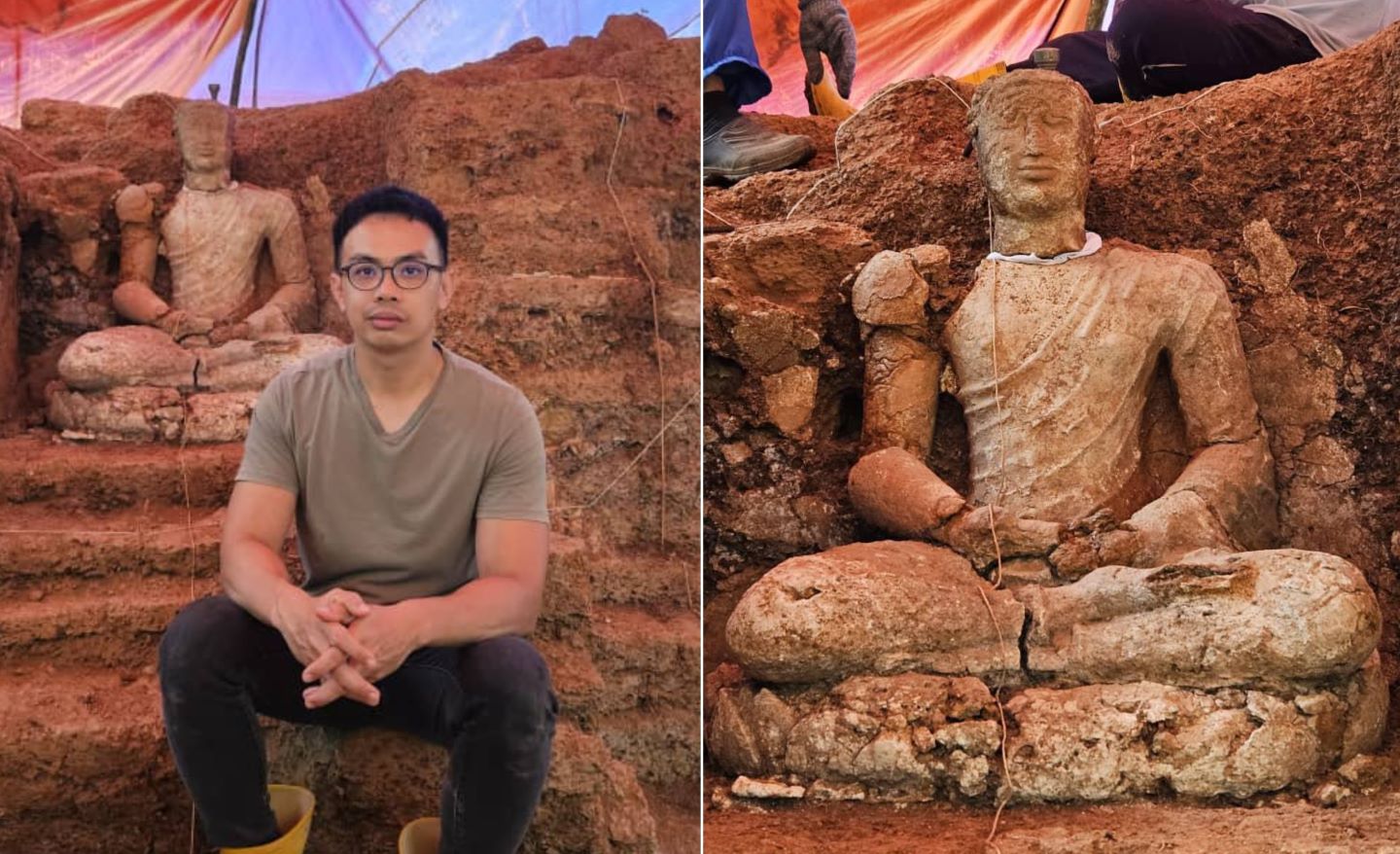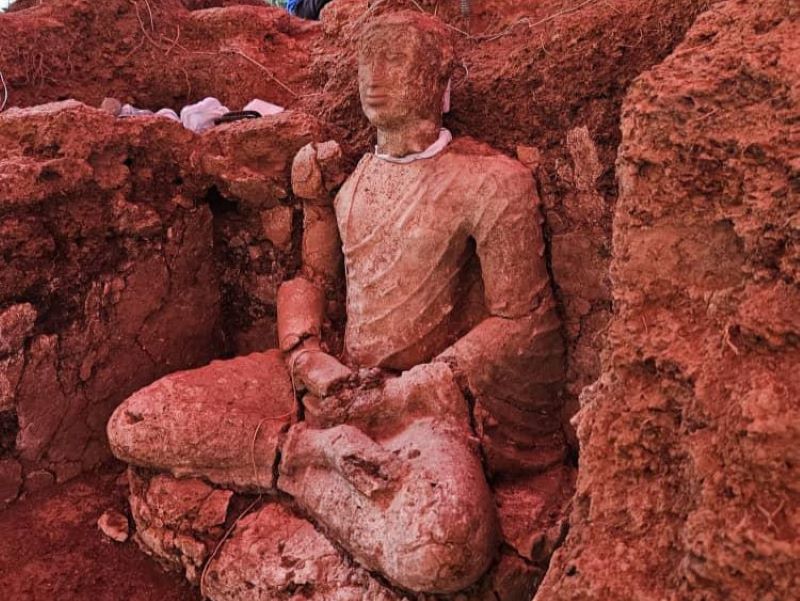
Dr Nasha Rodziadi Khaw of Universiti Sains Malaysia’s Centre for Archaeology Research (Photo: Dr Nasha)
Researchers from Universiti Sains Malaysia (USM) have made another mark in the history books after unearthing the largest Buddhist temple structure in Bukit Choras, Yan, Kedah, which dates back 1,200 years.
The result is a near-complete, life-size Buddha figure in a meditative position inside the temple, located north of Gunung Jerai in Kedah. The team from the Global Archaeological Research Centre (PPAG), led by Dr. Nasha Rodziadi Khaw, is also working to salvage two other relics believed to be Buddha figures, though these may be broken and missing their heads. According to the researchers, a fourth relic could be hidden within the temple structure.
Datuk Roslan Abdul Rahman, secretary-general of the Tourism, Arts, and Culture Ministry (Motac), highlighted the excitement surrounding this discovery as its history surpasses that of the Borobudur temple in Indonesia and Angkor Wat in Cambodia. The relics in Kedah are believed to originate from the 7th or 8th century AD, compared with the 9th century Borobudur and the early 12th century Angkor Wat.
The phase III archaeological research, a joint effort between the National Heritage Department and USM, was conducted from April 21 to May 21 this year. It also revealed several other artefacts of great significance and meaning to Malaysia.
8d993823-17d1-4f92-bf5a-4c0aa80c4c35.jpg

Found on the temple's northern wall, the Buddha's figure is made of stucco, a plaster mix of lime, water, and sand. Unlike the ones discovered in phases I and II, this figure is complete with its head, showcasing iconographic features such as robes, facial expression, and attire. Additionally, a Sanskrit inscription carved on stone and fragments of earthenware was also evident.
Comparative studies between this newly discovered Buddha figure and others from Indian, Indochinese, and Malay Archipelago civilisations can offer valuable insights into the ancient society of Kedah Tua (the ancient Kingdom of Kedah). Such research can deepen our understanding of its religious, cultural, and artistic-technological connections with the outside world.
So far, up to phase III of the archaeological research, three Sanskrit inscriptions have been discovered at Bukit Choras. All of them contain the sagaramatiparipriccha mantras, which are narratives about Buddhist religious doctrines associated with concepts of emptiness and causality. The content is similar to the inscriptions found in phase I.
With these latest discoveries, the Bukit Choras archaeological site not only reiterates the geostrategic strengths of Kedah Tua in the maritime trade routes of Southeast Asia but also serves as a hotspot for archaeo-tourism in the future.


